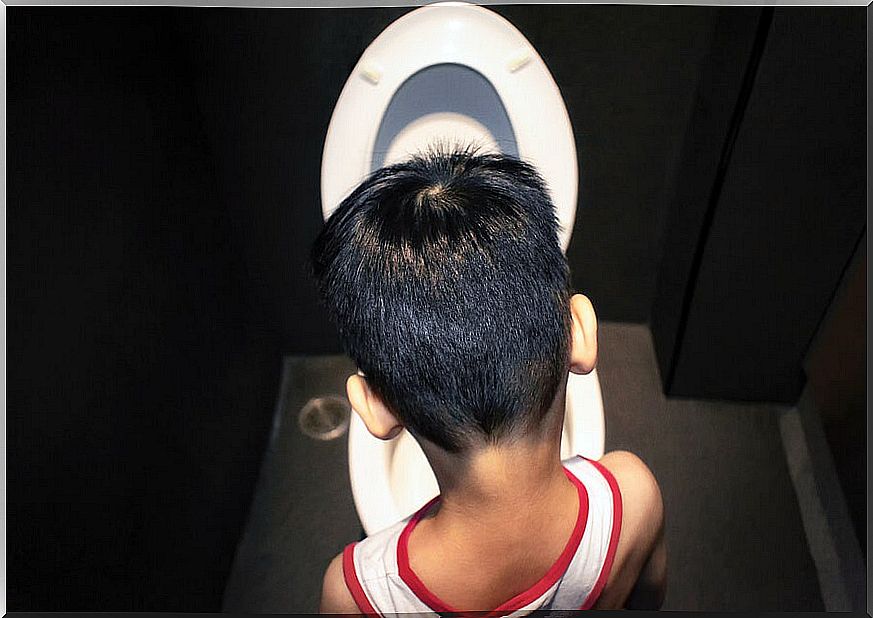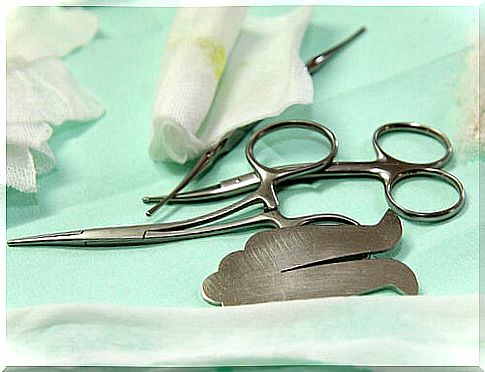Paraphimosis In Infants And Children

Paraphimosis, better known as retracted foreskin, is a rare condition that can affect babies and boys at any time in their lives . This causes a lot of pain in the area, due to the inflammation produced by excess retraction that parents or doctors usually perform to clean the glans or at the time of an exam.
This picture can generate serious complications if it is not treated in time. For this reason, it is important that parents keep an eye on their children and observe any irregularities, especially in their first years of life. A timely diagnosis and proper hygiene can prevent surgery for this condition.
Why does paraphimosis occur?
Its main cause is improper manipulation of the foreskin, the mobile fold that covers the glans. This is usually placed back to clean the penis of the child or baby, but if it is left in this position too long, it runs the risk of becoming inflamed.
This inflammation means that the foreskin cannot be pulled forward again. In this way, it causes what is known as paraphimosis.
Other reasons may be related to phimosis and infections due to poor hygiene, lesions in the area, bites from a spider or insect, a poorly executed circumcision and, in some more complicated cases, it can be due to childhood diabetes. This condition causes chronic inflammation, both in the penis and in the foreskin.
Signs and symptoms of paraphimosis
When it comes to a child or baby, it is often difficult for parents to realize the real problem that paraphimosis causes. For this reason, it is recommended that they be alert to any discomfort or crying to prevent complications in time. Here are some of its symptoms:
- Much pain and discomfort.
- Difficulty pulling the foreskin up.
- Inflammation of the glans.
- “Donut” appearance on the top of the glans.
- Frequent crying
- Irritation when urinating.
- Bluish or red color at the tip of the penis.

Differences between paraphimosis and phimosis
Paraphimosis and phimosis are often confused because they are related to each other. However, each pathology has its own characteristics:
- Phimosis: It is normal in newborn babies; the foreskin is very narrow and does not allow to reveal the glans, so it forms a ring that adheres and does not allow its retraction. This usually resolves naturally by 3 years of age; otherwise, doctors recommend manual retraction to avoid complications.
- Paraphimosis: This is the worsening of phimosis; in this case, the glans is uncovered and the foreskin, being down, contracts and causes inflammation and other serious consequences in the infant’s blood flow.
How to prevent paraphimosis in babies or children?
In the first months of life, babies are very delicate, so proper care will keep the infant out of danger. You should start by monitoring at the time of bathing and verify that the penis area is clean and free of residues to avoid infections.
In addition, it is important that the foreskin does not retract, since it will do so only as the child grows. In case the infant is over 3 years old, it is advisable for parents to teach him how to lower his foreskin to cover the glans and clean it, with the aim of creating awareness of what to do each time he goes to the bathroom or takes a shower. .
Risks of not acting on time
If not treated in time, the child can suffer consequences of great risk, such as the interruption of blood flow to the tip of your penis; this inconvenience can produce gangrene.
Likewise, there may be problems urinating, complications from another infection that may occur, and worsening inflammation, which can even lead to loss of the limb.
Likewise, more serious cases can occur, such as hospital emergencies with severe obstruction, bleeding, irritation and a lot of pain. Under these circumstances, The doctor will need to make an incision in the foreskin to decrease the swelling and strangulation of the glans penis.

Treatment and recommendations
The main treatment is to gently press the head of the boy’s penis while pulling the foreskin forward; if it can be brought into position, it will help reduce inflammation and heal over the days. If the foreskin does not sag, it is best to see a specialist in the area for an evaluation.
It is also important that parents teach their children from the first 3 years of age to clean this area well and to handle their member in the correct way. Thus, you will be able to prevent undue exposure of the glans, which leads to retraction and paraphimosis.
Lastly, in case of wanting a definitive cure for paraphimosis, it is necessary to undergo a circumcision by a specialist. This surgery basically consists of the removal of the foreskin.
As a final tip, it is recommended that parents take their baby to the doctor as soon as they see the first warning sign. With this collection, they will avoid the risk of subjecting him to a surgical intervention.










